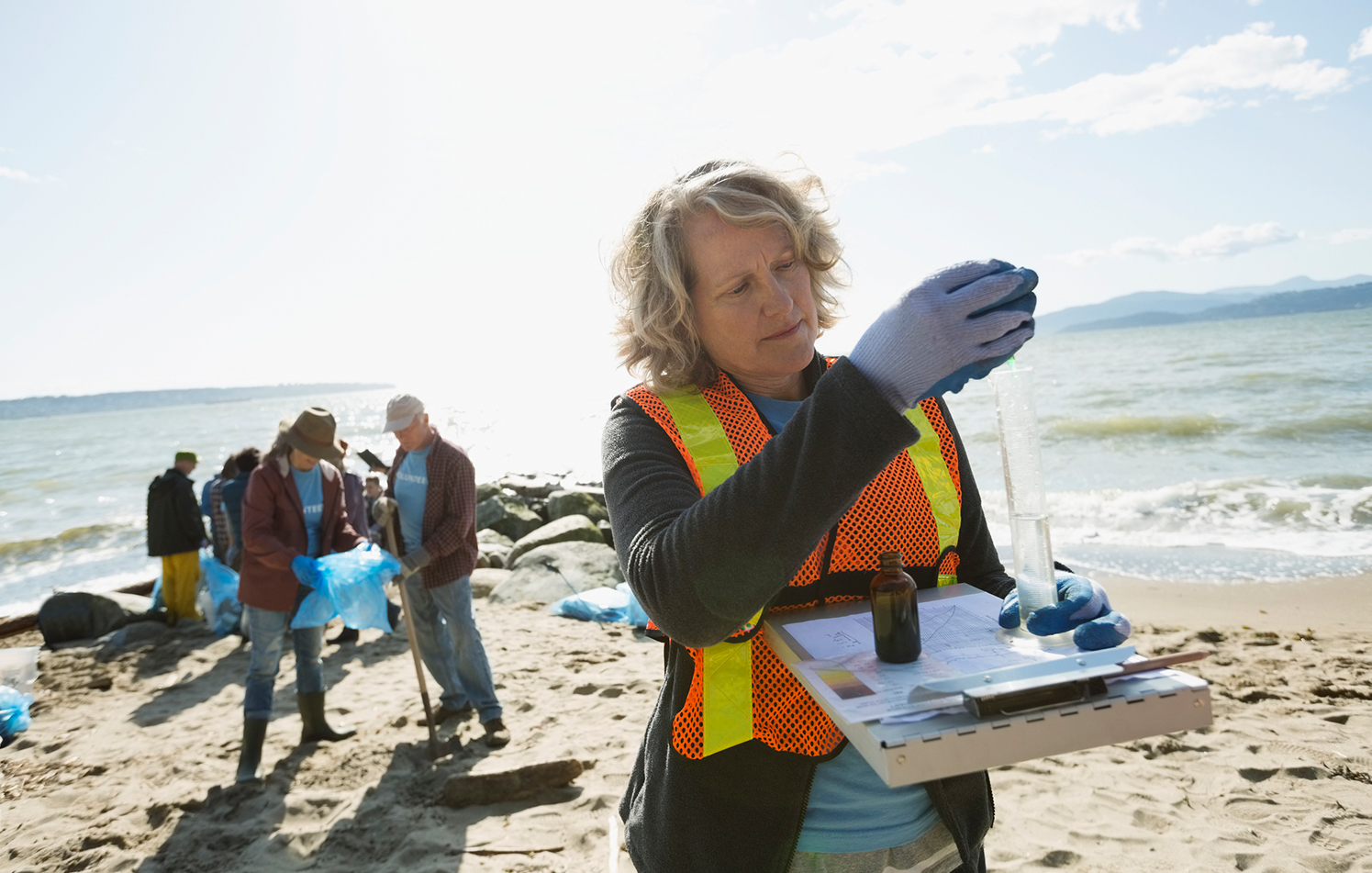April 22nd is Earth Day and this year millions of people worldwide will take part in activities intended to promote awareness of environmental issues. And while we may live in a partisan era characterized by heated rhetoric, protecting the planet is actually something most of us agree upon.
In fact, according to a 2016 Pew survey, 74% of U.S. adults believe that the “country should do whatever it takes to protect the environment, while a mere 4% say that they “never recycle or reduce waste to protect the environment.”
We at Indeed are committed to protecting the planet, but as the largest jobs site on earth we are also interested in how the drive to “go green” intersects with the labor market. Today, there are many jobs related to environmental protection, but which are most plentiful? Which states have the most opportunities? And just how interested are job seekers in green occupations anyway?
We teamed up with Laura Schultz of the SUNY Polytechnic Institute to identify a list of green jobs where the core component is environmental preservation. Then we analyzed the data for all of 2016 to answer these questions. Here’s what we found.
Environmental specialist is the number one green job in the US
First, we decided to identify the top green job opportunities in the US today. If you want to combine a passion for protecting the environment with your career, these are the jobs with the most postings on Indeed.

In first place comes “environmental specialist.” This is a job with a pretty broad definition — according to the Bureau of Labor Statistics (BLS), environmental specialists “use their knowledge of the natural sciences to protect the environment and human health. They may clean up polluted areas, advise policymakers, or work with industry to reduce waste.”
It is also a job that pays quite well. The median salary was $67,460 in May 2015, which is more than twice the national figure. And there is more good news: the profession is projected to grow at 11% between 2014 and 2024, faster than the national average. On the other hand, it’s not a job that just anyone can do; a minimum of a bachelor’s degree is required.
This high skill/good pay combination is not an outlier. When we look at the other jobs in the top 10 we see terms such as “engineer, manager, technician.” You can protect the environment and make a good living — but you’ll have to get an education first.
Vermont leads for green jobs — but oil states aren’t far behind
But where are these green jobs? The short answer is “everywhere,” in that every state has opportunities for green job seekers. In some states, however, green jobs make up a larger share of job postings overall than in others. (To see the full ranking, scroll to the bottom).

As we can see, one size definitely does not fit all when it comes to green job opportunities. A state can be red or blue, industrial or agricultural, densely populated or lightly populated and still be home to many green opportunities.
Leafy Vermont holds the number one position — in fact, the share of green jobs in the (appropriately named) Green Mountain State is almost double (1.9 times) the national average. Here, we see the most postings for “environmental specialist” jobs, followed by “environmental technician.”
While Vermont is well-known for its eco-friendly attitudes, some of the other states in our top ten may come as a surprise to many. In particular, oil and coal producing states appear to be rich in green opportunities: Alaska ranks second, while Kentucky places fourth and North Dakota fifth.
On the other hand, the District of Columbia, which has no oil at all and not that much territory to protect places sixth.

What this shows us is that green jobs are created by a range of factors: many green jobs likely arise as a result of regulation at the state or national level, or from corporate social responsibility policies. In the end, it is not such a paradox that opportunities to protect the environment arise in states where local industries create the most challenges for the environment; meanwhile DC is the federal center where professionals responsible for creating and monitoring compliance with regulations are heavily concentrated.
It is also striking that there is no strong political trend in the top ten. In fact, six of our “greenest” states are red, while four are blue. That said, we do find that blue states have a greater share of green opportunities overall (to see the full list, scroll to the bottom), while the bottom ten is, save for Illinois, composed almost exclusively of red states.
The state which comes last for green jobs is Mississippi, which has a share less than one third that of Vermont. That said, 49th place Illinois is not much greener.
West Virginia comes first for job seeker interest in green professions
So now we know the what and the where of green jobs — but what about the who?
To find out where interest in careers related to environmental protection is strongest, we built a measure of job interest based on how popular a posting is on our site. What we found is that in every single state green jobs receive a lot of clicks from job seekers: in fact, at the national level, interest in green jobs is almost double (1.7 times higher) that of jobs overall. Even so, levels of interest vary from state to state.

Strikingly, our ranking of job seeker interest looks very different from our ranking of green opportunities. While West Virginia comes first for job seeker interest (scoring almost four times the national average) it has relatively few opportunities in comparison to many other states. In fact, West Virginia has the second lowest share of green jobs nationwide, placing right behind Mississippi at the bottom of our opportunities ranking.
But that’s not all. Only three states from our green opportunities top ten (Alaska, Montana, and Wyoming) appear in our job seeker interest top ten — while Vermont doesn’t show up at all, despite the relative abundance of green opportunities in that state.
At Indeed, we often find that people respond to availability and job seekers know where to find the opportunities that interest them the most. When it comes to green jobs, however, we see a different picture: in fact, there is no correlation between the number of opportunities available and interest from job seekers.
This suggests that although lots of people are interested in green jobs, they are not so sure where to find them. Green employers, therefore, may want to cast their net widely and advertise jobs outside their immediate area.
US job seekers show the most interest in green opportunities
Earth Day is a global event, of course, and so we also took a look at five other English speaking labor markets where Indeed operates websites (Australia, United Kingdom, Canada and Ireland) to see how the US compares for opportunities and interest.
Here we see that of all these countries, the US has the smallest share of green opportunities. However, when we look at interest from job seekers, the picture is very different — in fact, the US places first.

We also see strong interest in Canada where — as in the US — there is notably more interest in green jobs relative to their availability. By contrast, in countries that rank highly for opportunities — such as Australia and the UK — we actually see levels of interest in green jobs that are slightly lower than the average level of interest for jobs overall.
Thus, while the US may lag when it comes to shares of green jobs, it leads when we look at job seeker interest. This in turn may indicate that there is a degree of mismatch in terms of opportunities between levels of job seeker interest and the amount of jobs available.
Regardless of the possible explanations for these differences between countries, this much is clear — even in these partisan times, green jobs are attractive to many Americans. Happy Earth Day!

Interested in posting a green (or any) job? Visit Indeed.com/hire.
Want tips on how to apply for a green (or any) job?Check out Indeed’s Essential Job Search Guide.







